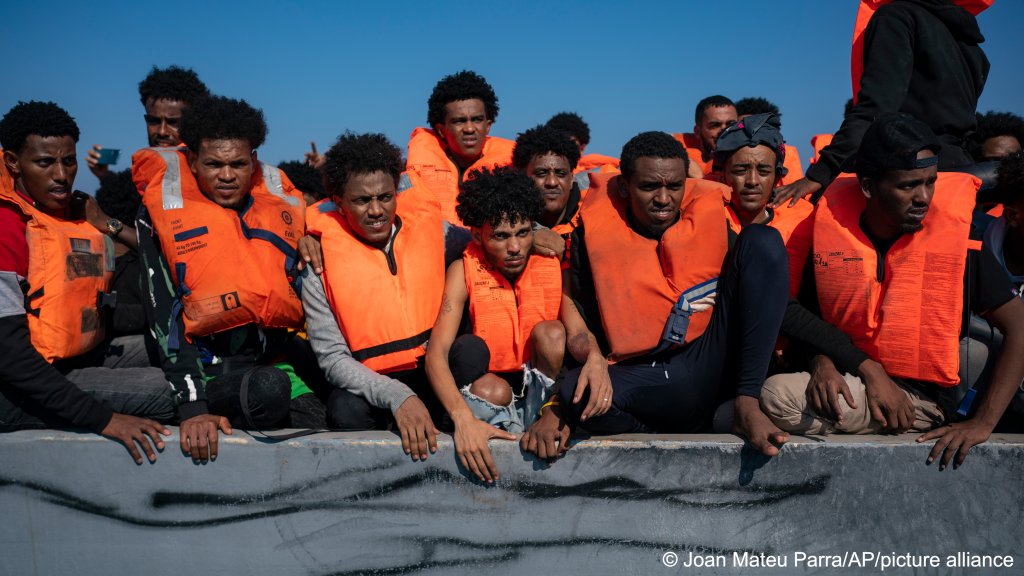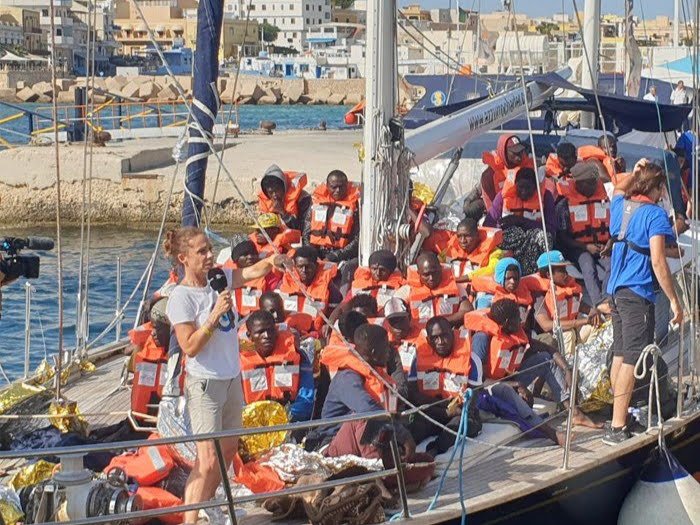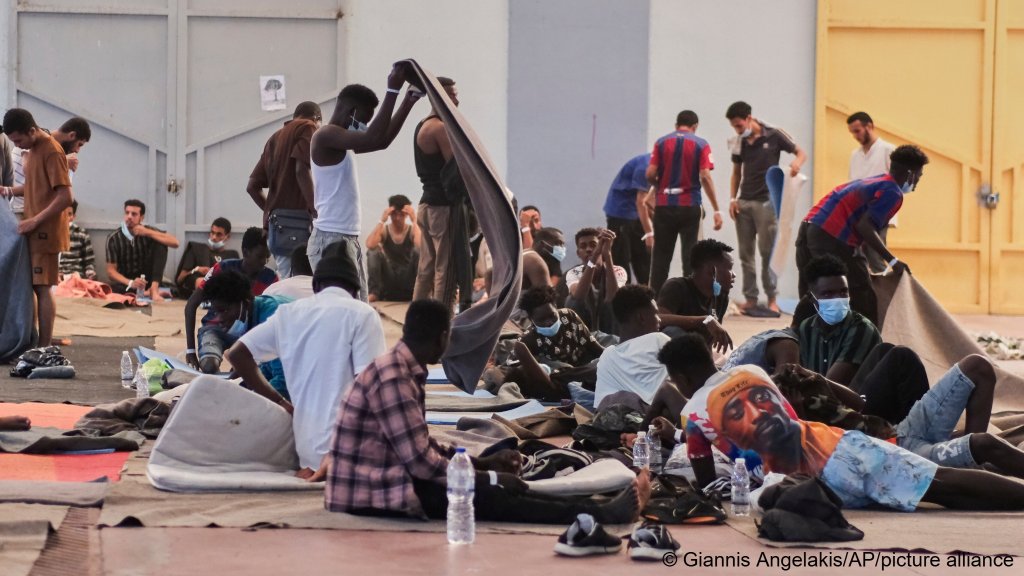Close to 15,000 interceptions at sea and nearly 35,000 arrivals in Italy alone to date this year: Libya continues to play a major role in Europe's migration narrative, as the EU continues to partner up with the North African nation. Recently, there have also been indications of attempts at cooperation between European governments and Haftar's rival government.
The International Organization for Migration (IOM) announced in its weekly report last week that just shy of 500 migrants -- including 29 women and 15 minors -- had been intercepted by Libyan officials at sea and returned to Libya in the week of August 10-16.
The majority of the migrants -- 426 -- notably had departed from the western part of the country, which is run by the internationally recognized Government of National Unity (GNA) based in the capital, Tripoli.
Another 65 had left from coastal areas under the control of the de facto rival government under the leadership of military strongman Khalifa Haftar.
These numbers will continue to preoccupy European governments, as further arrivals from Libya might be due in the coming weeks, while the weather conditions across the Mediterranean Sea remain relatively mild for smugglers to organize boat departures.

Hundreds continue to die at sea
Since the beginning of the year, there have been 14,554 cases of interceptions at sea by authorities from Libya, which resulted in a return to the North African country.
Close to 500 of them are children, with slightly under 10 percent believed to be women.
Meanwhile, around 400 people are known to have lost their lives on this section of the Central Mediterranean sea route, while another 318 remain missing from confirmed shipwrecks and other incidents at sea.
Rights groups, however, believe that the number of those who perished is far higher, as many of the departures from North Africa are unnoticed or unreported.
Read AlsoShipwrecks avoided by halting irregular departures – Piantedosi
Thousands continue to arrive in Italy
On the opposite end of the Mediterranean, meanwhile, Italian government data updated August 25 shows that 40,510 migrants have reached Italian shores after departing from North Africa since the start of the year.
Earlier data from UNHCR from August 18, when the total was nearing 40,000, indicated that the majority, a total of 34,389 migrants, had reached Italy after leaving from Libya, while just short of 3,000 had departed from Tunisia.
Another 733 had left from Algerian shores, according to UNHCR.
While overall irregular immigration numbers from across the Mediterranean are down, certain regions in Europe continue to battle with disproportionate arrival rates, with the patterns of migrant journeys constantly changing and smugglers adapting.

Read AlsoLibya: Climate change pushes migrants toward new routes
Inhumane and brutal conditions in Libya
Interceptions at sea by Libya's coast guard and related returns remain contentious, as human rights groups decry the situation for migrants in the country, while it is increasingly trying to position itself as a dependable partner.
Reports of unsanitary conditions and inhumane treatment abound from inside the notorious detention centers in the country, with multiple reports of starvation resulting in deaths, as well as instances of abuse, torture and even mass murder -- including reports of some of those atrocities taking place at detention centers.
The European Union helps fund the majority of Libyan operations to intercept Europe-bound migrants at sea, in addition to reaching agreements with the governments of Tunisia, Egypt, Algeria and Mauritania in recent years to intervene in attempted crossings into EU territory.
Some European nation states such as Italy and more recently Greece are also increasingly striking direct deals with the internationally recognized GNA government to stem the flow of migrants.
Read AlsoEU-Africa migration policy shift: Cooperation or coersion?
Greece: training of Libyan officials - including participant from the east
Recently, there have also been indications of attempts at cooperation between European governments and Haftar's rival government. In July, the EU attempted to send a delegation to speak with officials there earlier in the summer, however unsuccessfully.
Brussels says, however, that it is keen to continue reaching out to Haftar's administration in Benghazi.
More recently, the Greek government appears to have entered some level of working relations with Haftar's administration, as coast guard officials from the GNA government and from eastern Libya were sent to the southern Greek island of Crete earlier this month to receive specific training in stopping migrants.

Read AlsoGreece: Libyan coast guard officials receive training
Crete has experienced a major spike in migrant arrivals in recent months, breaching the mark of 7,000 arrivals this year, prompting the Greek government to introduce emergency measures to stop the processing of asylum cases lodged there as a deterrent to migrants and the smugglers.
Many of those who have reached the shores of Crete in recent months are believed to have departed from eastern Libya, which is geographically closer to the southern Greek island.
Read AlsoMigrant arrivals in Greece drop, but asylum suspension draws sharp criticism
with EFE
